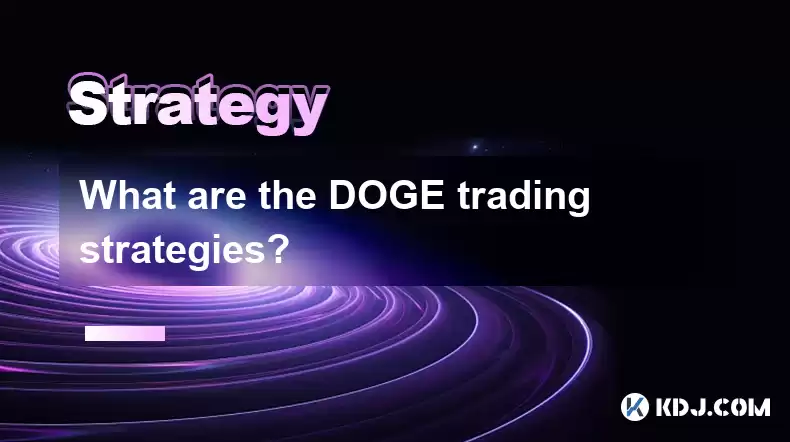-
 Bitcoin
Bitcoin $114500
-0.31% -
 Ethereum
Ethereum $3648
1.11% -
 XRP
XRP $3.033
-0.27% -
 Tether USDt
Tether USDt $0.9999
-0.01% -
 BNB
BNB $758.5
-0.32% -
 Solana
Solana $167.5
1.48% -
 USDC
USDC $0.9998
-0.02% -
 TRON
TRON $0.3331
0.74% -
 Dogecoin
Dogecoin $0.2039
0.25% -
 Cardano
Cardano $0.7419
-0.46% -
 Hyperliquid
Hyperliquid $39.21
2.66% -
 Stellar
Stellar $0.4049
-1.95% -
 Sui
Sui $3.483
-0.56% -
 Bitcoin Cash
Bitcoin Cash $570.8
2.89% -
 Chainlink
Chainlink $16.67
-0.57% -
 Hedera
Hedera $0.2470
-1.57% -
 Ethena USDe
Ethena USDe $1.001
0.00% -
 Avalanche
Avalanche $22.36
1.52% -
 Litecoin
Litecoin $123.4
4.35% -
 UNUS SED LEO
UNUS SED LEO $8.989
0.09% -
 Toncoin
Toncoin $3.324
-2.40% -
 Shiba Inu
Shiba Inu $0.00001219
-1.30% -
 Uniswap
Uniswap $9.811
2.54% -
 Polkadot
Polkadot $3.662
-0.07% -
 Monero
Monero $295.5
-3.85% -
 Dai
Dai $1.000
0.01% -
 Bitget Token
Bitget Token $4.345
0.24% -
 Cronos
Cronos $0.1380
0.95% -
 Pepe
Pepe $0.00001044
-1.14% -
 Ethena
Ethena $0.5981
-4.24%
What are the Bitcoin trading strategies?
To trade Dogecoin effectively, understand its market dynamics and use strategies like day trading, swing trading, HODLing, scalping, and arbitrage while managing risks.
Apr 21, 2025 at 01:00 pm

Trading Dogecoin (DOGE) can be an exciting venture, given its volatility and popularity within the cryptocurrency community. To maximize your potential returns while managing risks, it's essential to understand and apply various trading strategies. Here, we will explore several effective DOGE trading strategies that can help you navigate the market.
Understanding Dogecoin and Its Market Dynamics
Before diving into specific trading strategies, it's crucial to have a solid understanding of Dogecoin and its market dynamics. Dogecoin was initially created as a meme cryptocurrency but has since gained significant traction, often influenced by social media trends and endorsements from high-profile individuals. Its market is known for its high volatility, which can present both opportunities and risks for traders.
Day Trading Dogecoin
Day trading involves buying and selling DOGE within the same trading day to capitalize on short-term price movements. This strategy requires close monitoring of the market and a good understanding of technical analysis.
- Choose a reliable trading platform: Ensure the platform you use supports DOGE and has low transaction fees.
- Set up real-time alerts: Use tools to get notified of significant price changes or news that could impact DOGE's value.
- Analyze charts: Use technical indicators like moving averages, RSI, and MACD to identify potential entry and exit points.
- Set stop-loss orders: To manage risk, set stop-loss orders to automatically sell your DOGE if the price drops to a certain level.
- Monitor and adjust: Continuously monitor the market and be ready to adjust your positions based on new information or price movements.
Swing Trading Dogecoin
Swing trading is a strategy that involves holding DOGE for several days to weeks to take advantage of expected upward or downward market swings. This approach requires a good understanding of both technical and fundamental analysis.
- Identify trends: Use technical analysis to identify the overall trend of DOGE's price movement.
- Analyze fundamental factors: Keep an eye on news and events that could impact DOGE's value, such as endorsements or partnerships.
- Enter and exit positions: Buy DOGE at the beginning of an upward swing and sell it at the peak, or short sell at the beginning of a downward swing and buy back at the trough.
- Use stop-loss and take-profit orders: Set these orders to manage risk and lock in profits.
HODLing Dogecoin
HODLing, or holding onto your DOGE for the long term, is a strategy based on the belief that the cryptocurrency's value will increase over time. This approach is less about actively trading and more about investing in DOGE's long-term potential.
- Research and understand DOGE's long-term potential: Look into its adoption rates, community support, and technological developments.
- Diversify your portfolio: Don't put all your funds into DOGE; spread your investments across different assets to manage risk.
- Stay informed: Keep up with news and developments related to DOGE to make informed decisions about when to sell.
Scalping Dogecoin
Scalping is a strategy that involves making numerous small trades throughout the day to profit from minor price changes. This approach requires quick decision-making and a high level of market attention.
- Choose a platform with low fees: Scalping involves many trades, so low transaction fees are crucial to maintaining profitability.
- Use technical indicators: Rely on indicators like Bollinger Bands, Stochastic Oscillator, and volume to identify short-term price movements.
- Set tight stop-losses: Given the small profit margins, setting tight stop-losses is essential to manage risk.
- Execute trades quickly: Be ready to enter and exit positions swiftly to capitalize on small price fluctuations.
Arbitrage Trading Dogecoin
Arbitrage involves buying DOGE on one exchange where the price is low and selling it on another where the price is higher. This strategy can be profitable due to price discrepancies between different exchanges.
- Monitor multiple exchanges: Use tools to track DOGE's price across different platforms.
- Calculate potential profits: Ensure the price difference is significant enough to cover transaction fees and still yield a profit.
- Execute trades quickly: Speed is crucial in arbitrage to take advantage of temporary price differences.
- Consider automated tools: Use bots to automate the process of buying and selling DOGE across different exchanges.
Risk Management in DOGE Trading
Regardless of the trading strategy you choose, effective risk management is essential to protect your capital and ensure long-term success.
- Set risk limits: Determine the maximum amount of capital you're willing to risk on each trade.
- Use stop-loss orders: Always set stop-loss orders to limit potential losses.
- Diversify: Don't put all your funds into DOGE; diversify your portfolio to spread risk.
- Stay informed: Keep up with market news and developments to make informed trading decisions.
FAQs
Q: Can I use the same trading strategies for other cryptocurrencies?
A: While some strategies like day trading and swing trading can be applied to other cryptocurrencies, it's important to consider the unique characteristics and market dynamics of each cryptocurrency. For example, Bitcoin's market may be less volatile than DOGE's, which could affect the effectiveness of certain strategies.
Q: How much capital do I need to start trading DOGE?
A: The amount of capital needed to start trading DOGE can vary depending on your trading strategy and risk tolerance. For day trading and scalping, you might need more capital to cover transaction fees and potential losses. However, you can start with a small amount and gradually increase your investment as you gain experience and confidence.
Q: Is it possible to trade DOGE on weekends?
A: Yes, some cryptocurrency exchanges operate 24/7, allowing you to trade DOGE on weekends. However, liquidity might be lower during these times, which could impact the effectiveness of certain trading strategies.
Q: How important is it to stay updated with DOGE news and developments?
A: Staying updated with DOGE news and developments is crucial for making informed trading decisions. News about endorsements, partnerships, or technological advancements can significantly impact DOGE's price, making it essential to stay informed to capitalize on potential opportunities or mitigate risks.
Disclaimer:info@kdj.com
The information provided is not trading advice. kdj.com does not assume any responsibility for any investments made based on the information provided in this article. Cryptocurrencies are highly volatile and it is highly recommended that you invest with caution after thorough research!
If you believe that the content used on this website infringes your copyright, please contact us immediately (info@kdj.com) and we will delete it promptly.
- Metamask, Altcoins, and the Move: Is Cold Wallet the Future?
- 2025-08-06 04:30:12
- BlockDAG, BNB, and SEI: What's Hot and What's Not in the Crypto World
- 2025-08-06 04:50:13
- Cryptos Under $1 Primed for a Bull Run: Which Will Explode?
- 2025-08-06 05:30:12
- Coinbase (COIN) Stock Trading Lower: Navigating the Crypto Equity Reset
- 2025-08-06 04:35:13
- Meme Coins Skyrocket: Is Dogecoin About to Be Dethroned?
- 2025-08-06 03:50:13
- Tether's On-Chain Surge: USDT Dominates and Drives Blockchain Fees
- 2025-08-06 02:50:13
Related knowledge

How to avoid common crypto investment mistakes?
Jul 13,2025 at 01:35am
Understanding the Risks of Crypto InvestmentInvesting in cryptocurrency can be highly rewarding, but it also comes with significant risks. One of the ...

What is a long-short crypto strategy?
Jul 15,2025 at 10:56am
Understanding the Basics of a Long-Short Crypto StrategyA long-short crypto strategy is an investment approach where traders simultaneously take long ...

What is a long-short crypto strategy?
Jul 11,2025 at 01:28pm
Understanding the Basics of Long-Short Crypto StrategyA long-short crypto strategy is an investment approach where traders take both long and short po...

How to use the RSI indicator for crypto?
Jul 12,2025 at 03:56pm
Understanding the RSI Indicator in Cryptocurrency TradingThe Relative Strength Index (RSI) is a momentum oscillator used to measure the speed and chan...

Is copy trading a good strategy for crypto beginners?
Jul 12,2025 at 08:28am
Understanding Copy Trading in the Cryptocurrency MarketCopy trading is a strategy where novice traders replicate the trades of experienced investors a...

How to build a crypto portfolio with $1000?
Jul 13,2025 at 08:14pm
Understanding the Basics of Cryptocurrency InvestmentBuilding a crypto portfolio with $1000 starts with understanding the fundamentals of cryptocurren...

How to avoid common crypto investment mistakes?
Jul 13,2025 at 01:35am
Understanding the Risks of Crypto InvestmentInvesting in cryptocurrency can be highly rewarding, but it also comes with significant risks. One of the ...

What is a long-short crypto strategy?
Jul 15,2025 at 10:56am
Understanding the Basics of a Long-Short Crypto StrategyA long-short crypto strategy is an investment approach where traders simultaneously take long ...

What is a long-short crypto strategy?
Jul 11,2025 at 01:28pm
Understanding the Basics of Long-Short Crypto StrategyA long-short crypto strategy is an investment approach where traders take both long and short po...

How to use the RSI indicator for crypto?
Jul 12,2025 at 03:56pm
Understanding the RSI Indicator in Cryptocurrency TradingThe Relative Strength Index (RSI) is a momentum oscillator used to measure the speed and chan...

Is copy trading a good strategy for crypto beginners?
Jul 12,2025 at 08:28am
Understanding Copy Trading in the Cryptocurrency MarketCopy trading is a strategy where novice traders replicate the trades of experienced investors a...

How to build a crypto portfolio with $1000?
Jul 13,2025 at 08:14pm
Understanding the Basics of Cryptocurrency InvestmentBuilding a crypto portfolio with $1000 starts with understanding the fundamentals of cryptocurren...
See all articles

























































































